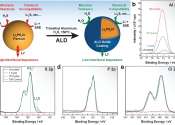Pollen-based 'paper' holds promise for new generation of natural components
Scientists at Singapore's Nanyang Technological University (NTU Singapore) have created a paper-like material derived from pollen that bends and curls in response to changing levels of environmental humidity.
Apr 6, 2020
0
189









